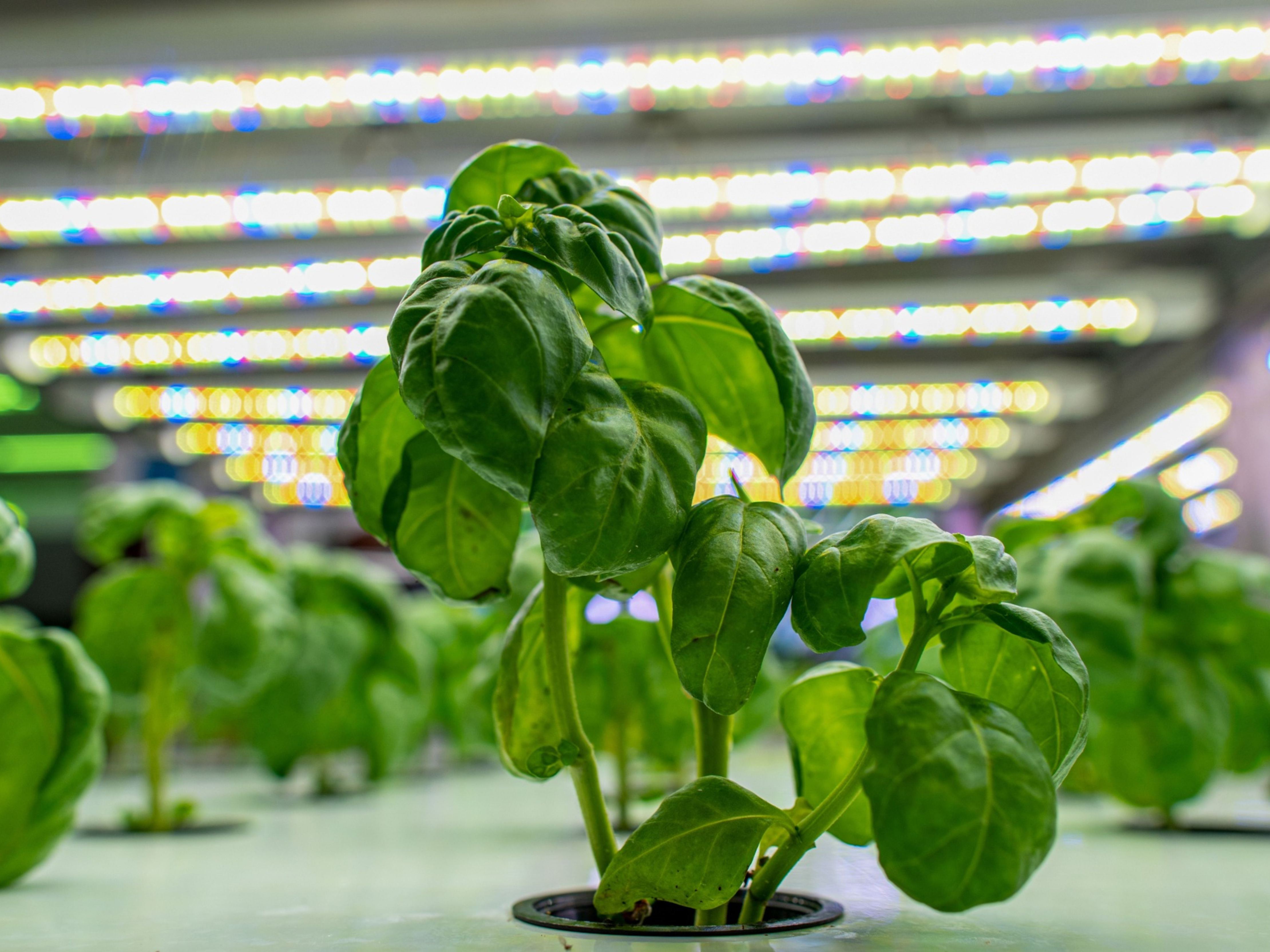
The global food supply chain is in trouble. The coronavirus pandemic is only the latest crisis to highlight the inefficiencies and spotty reliability of the traditional model for getting food from farm to consumer. Repeated instances of contamination reveal inadequacies in quality control and the tracking of product throughout the supply chain. And environmental concerns are raising serious questions about the impact of large-scale farming on the land, water and air.
There’s a clear need for alternative methods of food production. One is vertical farming, a system of growing crops in stacked layers, spaced 24 to 36 inches apart, with artificial lights and temperature controls. Vertical farms can be constructed within any type of confined space, including dedicated buildings, shipping containers and even abandoned mineshafts. The equivalent of 60 acres of produce can be squeezed into a single controlled warehouse, with layers stacked six levels or more high.
Further advantages of vertical farming include complete protection from weather and crop pests, without the need for pesticides or other chemicals, and drastic reductions in water use. A pound of lettuce that requires 41 gallons of water with conventional farming needs just two gallons with vertical farming — in all, up to 99% less water than field-grown produce.
One such system is in operation outside Boston, Massachusetts by Crop One, which markets its products under the FreshBox Farms brand. In business for eight years, Crop One claims to be the oldest vertical farmer in North America, in terms of continuous commercial production.
Crop One grows a wide variety of leafy produce, including lettuce, arugula, basil and spinach. From its location in Millis, Massachusetts, it supplies sellers within a radius of approximately 100 miles, with a presence in more than 35 grocery stores in the Northeast, according to chief executive officer Craig Ratajcyzk.
The location was chosen to cut down on the large volumes of produce that are typically shipped into the Boston area from California, Arizona, Texas and South and Central America. “Those are really long supply chains,” Ratajcyzk says. “Right now, we’re within an hour’s drive of all the markets we serve.” Crop One also sources its seed stock locally, he adds, although he acknowledges the need to diversify supply in order to reduce the risk of supply-chain disruptions.
Indoor farming allows Crop One to grow produce all year round, Ratajcyzk says. Its output will exceed three tons a day, and it will sell to some 20 retailers in the next year, once a new overseas facility is completed.
The company has big ambitions to expand its production and marketing reach, and Ratajcyzk sees no problem in scaling up. Currently, he says, “the whole CEA [controlled environmental agriculture] industry represents a small fraction of the global demand market.” But recent storms and cold weather in large portions of the U.S. have highlighted the need for a method of farming that isn’t susceptible to the whims of Mother Nature.
“The industry is growing substantially,” Ratajcyzk declares, with producers increasingly being drawn to a method of farming that dramatically boosts crop yield within a limited space.
The technology can even extend to fruit-bearing trees. “A traditional orange tree may be 15 or 20 feet,” Ratajcyzk says. “Why not a 10-foot tree producing twice as many oranges?”
The chief downside of vertical farming at the moment is one of cost. The price of an initial building containing the equivalent of a 60-hectare farm has been estimated at $100 million. Expenses include heavy energy consumption for supplemental lighting, temperature and humidity controls, fertilizer, and maintenance of proper carbon dioxide levels.
A Cornell University study from 2014 called vertical farms “pie in the sky,” estimating that a single loaf of bread containing wheat grown in a vertical farm would cost $27. Current economics would therefore appear to limit vertical farming to high-end products, although producers are banking that costs will plummet as the technology catches on. The net environmental advantages should also serve to boost its popularity in the coming years.
Vertical farming is “small, but growing every day,” says Ratajcyzk. “It’s a difficult model to establish, but if you’ve been around for five years-plus, then you have a higher probability of success.” He’s hoping for federal, state and local support of the fledgling technique.
“I can’t really think of a downside to this industry,” he says.







